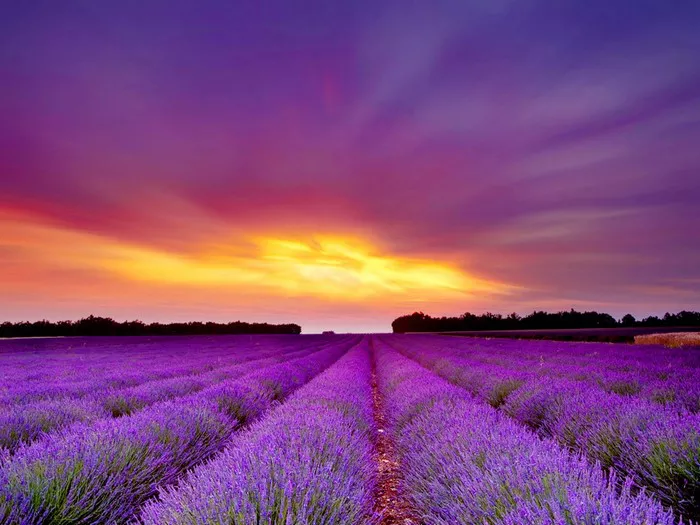Lavender, with its delicate purple hues and enchanting fragrance, has long captivated the senses and intrigued the mind. Beyond its aesthetic appeal, this ubiquitous herb holds deep symbolism and cultural significance across various civilizations throughout history. From ancient rituals to modern-day therapies, the meaning of lavender flowers transcends mere botanical beauty, touching upon themes of purity, tranquility, and healing. In this article, we delve into the rich tapestry of symbolism surrounding lavender, exploring its diverse meanings and profound impact on human culture.
Historical Roots: Lavender in Ancient Civilizations
The story of lavender begins millennia ago, with traces of its use dating back to ancient civilizations such as the Egyptians, Greeks, and Romans. In these cultures, lavender was revered for its therapeutic properties and symbolic associations. The ancient Egyptians used lavender in the embalming process, believing it could help preserve the body and facilitate the journey to the afterlife. They also used it in perfumes and cosmetics, recognizing its aromatic allure.
Similarly, the ancient Greeks and Romans valued lavender for its medicinal qualities. They infused it into oils and balms for its purported healing properties, using it to treat various ailments ranging from headaches to insomnia. Lavender also found its way into religious ceremonies, where it was often burned as incense to purify sacred spaces and invoke spiritual blessings.
Symbolism Across Cultures: The Universal Language of Lavender
As civilizations evolved and expanded, so too did the symbolism of lavender. Across different cultures and geographical regions, lavender came to represent a multitude of concepts and emotions, each deeply rooted in the collective consciousness of humanity.
In European folklore, lavender was associated with love and devotion. It was commonly used in bridal bouquets and wedding ceremonies as a symbol of fidelity and eternal commitment. Additionally, it was believed that placing lavender under one’s pillow could evoke dreams of passion and romance, further solidifying its reputation as a love charm.
In contrast, lavender also carried connotations of purity and innocence. During the Middle Ages, it was often strewn on the floors of churches and homes to ward off evil spirits and maintain a sense of sanctity. Its clean, refreshing scent was believed to cleanse both the body and the soul, making it a popular choice for religious rituals and purification rites.
Modern Interpretations: Lavender in Contemporary Contexts
In the modern era, lavender continues to hold sway over our collective imagination, albeit in new and innovative ways. With the advent of aromatherapy and alternative medicine, the therapeutic benefits of lavender have been scientifically validated and widely embraced. Its calming scent is now used to alleviate stress, anxiety, and insomnia, offering a natural remedy for the ailments of modern life.
Furthermore, lavender has found its place in the realm of holistic wellness and self-care. From lavender-infused bath salts to essential oil diffusers, products featuring this fragrant herb abound in the market, promising to soothe the senses and promote relaxation. Its association with tranquility and serenity has made it a staple in spas and wellness retreats, where it is used to create a peaceful ambiance conducive to healing and rejuvenation.
Culinary Delights: Exploring Lavender in the Kitchen
Beyond its therapeutic and aesthetic uses, lavender has also made its mark in the culinary world. In recent years, chefs and home cooks alike have begun incorporating this versatile herb into a variety of dishes, from savory to sweet. Its delicate floral notes add a unique dimension to culinary creations, elevating everything from desserts to cocktails.
Lavender-infused desserts, such as lavender shortbread cookies and lavender honey ice cream, have become popular indulgences, offering a taste of botanical bliss. Similarly, lavender-infused syrups and simple syrups are prized for their ability to impart a subtle floral flavor to cocktails and beverages, making them a favorite among mixologists and enthusiasts alike.
Conclusion
In conclusion, the meaning of lavender flowers transcends mere aesthetics, encompassing a rich tapestry of symbolism and significance that spans centuries and continents. From its ancient roots in ritual and medicine to its modern-day applications in wellness and cuisine, lavender continues to captivate our senses and inspire our imagination.
Whether used to evoke feelings of love and devotion, promote relaxation and tranquility, or tantalize the taste buds with its delicate flavor, lavender remains a timeless symbol of beauty and healing. As we continue to navigate the complexities of modern life, may we find solace and inspiration in the gentle embrace of this remarkable herb, and may its fragrance continue to uplift and enchant us for generations to come.


